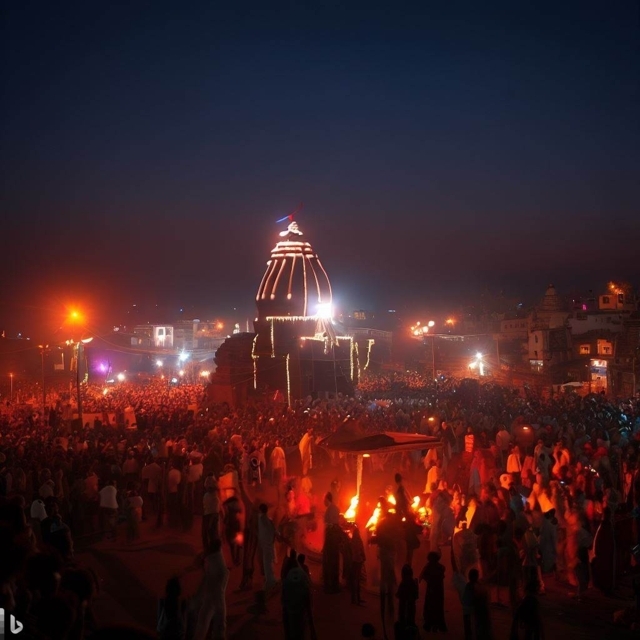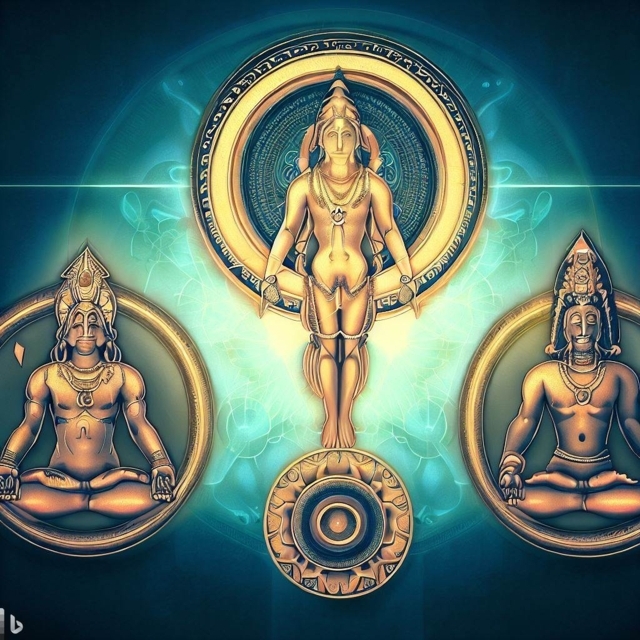In the vast tapestry of religious traditions that have shaped human civilization, Shaivism stands as a profound and multifaceted path towards spiritual awakening. Rooted in the mystical land of ancient India, Shaivism has flourished over the ages, captivating the hearts and minds of countless seekers. Join me on a journey to explore the origins, development, rituals, and current status of this remarkable religious tradition.
Foundation and Development
The origins of Shaivism can be traced back to the mists of time, to the era when the ancient Indus Valley Civilization thrived along the banks of the mighty Indus River. Its early roots are entwined with the ancient practices of yoga and meditation, as well as the veneration of powerful natural forces that were believed to embody the divine.
The development of Shaivism gained momentum during the Vedic period, around 1500 BCE. The Vedic hymns, known as the Rigveda, contain verses dedicated to Rudra, an early form of the deity Shiva, who would later become the central figure in Shaivism. Rudra was revered as a fierce and compassionate god, embodying both the destructive and regenerative aspects of creation.
Over time, Shaivism evolved into a rich and diverse tradition, incorporating a wide array of theological, philosophical, and ritualistic elements. It absorbed influences from other religious and cultural traditions, such as Tantra, which emphasized the transformative power of rituals, and Bhakti, which emphasized devotion and love towards the divine.
Characteristics and Beliefs
At its core, Shaivism teaches that the ultimate reality, known as Brahman, manifests as the divine trinity of Brahma (the creator), Vishnu (the preserver), and Shiva (the destroyer and regenerator). Shiva, the supreme deity of Shaivism, is revered as the embodiment of pure consciousness and the source of all existence.
Shaivism places great emphasis on the pursuit of spiritual liberation, known as moksha, and the realization of one’s divine nature. The path of Shaivism encompasses various practices, including meditation, yoga, self-discipline, and the study of sacred scriptures such as the Shiva Puranas. These practices aim to cultivate inner stillness, dissolve the ego, and merge the individual soul with the divine.
Rituals, Worship, and Temples
Rituals play a significant role in Shaivism, serving as a means to connect with the divine and invoke divine blessings. Daily worship typically involves the offering of flowers, incense, and sacred substances to Shiva’s iconic representation, the lingam, which symbolizes the cosmic creative energy. Devotees also engage in chanting of sacred mantras, such as the revered “Om Namah Shivaya,” which is believed to invoke the presence of Shiva.
Shaivite festivals are vibrant and joyous occasions that bring devotees together in celebration. The Maha Shivaratri festival, meaning “the great night of Shiva,” is one of the most important observances in Shaivism. It honours Shiva’s cosmic dance of creation, preservation, and dissolution, and devotees engage in fasting, night-long vigils, and the recitation of sacred hymns.
Shaivism is home to numerous magnificent temples that serve as sacred pilgrimage sites and centers of spiritual practice. Some of the popular active Shaivite temples include:
1. Kashi Vishwanath Temple, Varanasi, India: Located on the banks of the sacred Ganges River, this temple is dedicated to Lord Shiva. It is considered one of the holiest pilgrimage sites in Shaivism.
1. Annamalaiyar Temple, Thiruvannamalai, India: Situated at the foot of the sacred Arunachala Hill, this ancient temple is a significant Shaivite pilgrimage site in South India.
1. Meenakshi Amman Temple, Madurai, India: This grand temple complex is dedicated to the divine couple, Lord Shiva and Goddess Meenakshi. It is renowned for its elaborate architecture and vibrant festivals.
1. Brihadeeswarar Temple, Thanjavur, India: Built during the Chola dynasty, this UNESCO World Heritage Site is a masterpiece of Dravidian architecture and an important Shaivite pilgrimage destination.
Current Status
Shaivism continues to thrive in various forms across different regions of the Indian subcontinent. It has also spread beyond India’s borders, gaining followers in countries such as Nepal, Sri Lanka, and Southeast Asia. The tradition has adapted to modern times, embracing new expressions while remaining rooted in its ancient wisdom.
In contemporary Shaivism, spiritual teachers and gurus guide seekers on the path of self-realization. They provide guidance in the form of meditation techniques, philosophical teachings, and the transmission of sacred mantras. Shaivite communities and temples serve as focal points for communal worship, study, and the preservation of sacred traditions.
Conclusion
Shaivism, with its rich tapestry of beliefs, rituals, and sacred temples, offers a profound pathway for seekers to realize their divine nature and experience the union with the ultimate reality. Its ancient origins and ongoing development have shaped the lives of countless individuals, allowing them to delve into the depths of their own consciousness while embracing the divine presence within and around them.
References
– Flood, Gavin. An Introduction to Hinduism. Cambridge University Press, 1996.
– Kramrisch, Stella. The Presence of Siva. Princeton University Press, 1994.
– Lorenzen, David N. The Kāpālikas and Kālāmukhas: Two Lost Śaiva Sects. University of California Press, 1972.
– https://en.wikipedia.org/wiki/Arunachalesvara_Temple
– https://en.wikipedia.org/wiki/Meenakshi_Temple
Tags
Divi Meetup 2019, San Francisco
Related Articles
Unappreciated Greatness
Life and Legacy of Jahangir of the Mughal Empire. Jahangir ruled over one of the largest empires in human history during his lifetime, yet few people outside of South Asia have heard of him. I aim to shed light on the life and legacy of this remarkable figure,...
The Plague Doctor’s Diary
A Personal Account of the Turin Epidemic of 1656. I am writing this diary to record my experiences and observations as a plague doctor in Turin, the capital of the Duchy of Savoy, during the terrible epidemic that has afflicted this city and its surroundings since the...
The Timeless Beauty of Bustan
Unveiling the Secrets of Saadi Shirazi's Masterpiece.In the realm of Persian literature, few works have captured the essence of love, spirituality, and morality quite like Bustan (The Orchard) by Saadi Shirazi. This 13th-century masterpiece has left a lasting impact...
Stay Up to Date With The Latest News & Updates
Explore
Browse your topics of interest using our keyword list.
Join Our Newsletter
Sign-up to get an overview of our recent articles handpicked by our editors.
Follow Us
Follow our social media accounts to get instant notifications about our newly published articles.









